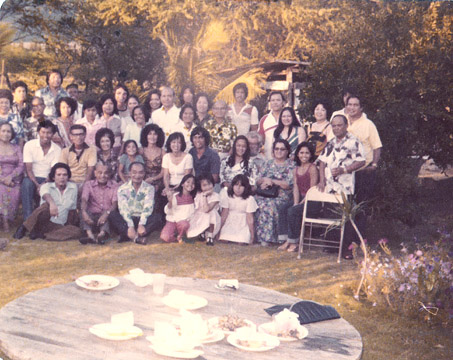Grannie roasted endless turkeys for Filipino parties. On party days, Visayans would descend upon the house, followed by trays of sponge cake, meat, rice and slippery noodles that looked like worms. Who are these people, what are they saying, and why are they eating clear worms? They were like the baby kittens I saw for the first time, beings from another planet.
The outdoor lanai that later became the two-story edition once hosted a party with tables of tin food trays. It was here that I set up my first art sale. I was always painting with the watercolor sets Grannie ordered from a paper catalog. I would mark the item then Grannie mailed in a check while I impatiently waited weeks for my art supplies. The day of the party, I decided to sell my paintings to guests, ever the entrepreneur like Grandpa. He wore his dark brown toupé, never bothered by how obvious the hair cap was against his bare forehead. The white Filipino shirt, the barang tagalog was Grandpa’s formal wear. It was sheer and richly embroidered, contrasting with his white tank top underneath. Like the Visayans and their weird food, Grandpa’s costume was strange to my young eyes. Only much later would I come to understand it as a symbol of Filipino pride, a blend between the native dress made from
|
|
|

pineapple leaves and the embroidered Spanish cloth.
The parties would inevitably end with a lecture by Grandpa on the microphone speaking to the virtues of "Man's Moral Concept.” The teachings were from a Jesus-like figure, Hilario Moncado, a kind of contemporary Filipino saint. A 1940s photo of the tall Moncado flanked by Grannie in a ballgown and Grandpa in a tuxedo hung above a doorway. He was the benevolent overlord of the house. But Grandpa's fervent devotion and overbearing demand that I love the shadowy figure only made me fear this Moncado, and by extension Grandpa whenever he was in his devotionals. <next> |